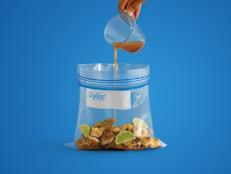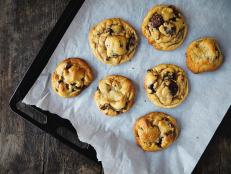In the Bag: Keep Your Packed Lunch Safe
When trying to trying to cut calories or costs, brown-bagging your lunch is a good option. But sometimes it's not as easy as just tossing food in a sack and being on your merry way. Here are 4 main rules to remember.
Make a plan based on your office set up. Is there access to a refrigerator? If so, is there room for your lunch every day? Would you actually want to store something you're going to eat in there? If that's a definite no, ice packs are another alternative. Small, reusable ice packs cost about $1 each and can keep food cold for hours (this is great choice for kids' lunches, too). Just don't forget to bring them home to refreeze every night.
Bacteria begin to thrive on prepared foods that get above 40 degrees Fahrenheit -- so keep cooked food cooled (or warmed). A sturdy thermos is smart for warm foods. It might cost you at first, but it'll last longer (and be safer) than disposable plastic containers. Don't leave sandwiches and salad at room temperature for more than two hours -- ditto that for any leftovers from last night's dinner.
Skip buying those paper bags at the grocery store each month and switch to a reusable sack. They hold up better than paper bags, too (no soggy mess in your car from accidental spills or ripped bags). Get an insulated one, if possible.
Pack only what you’ll eat from day to day. Stash extra granola bars, fruit and things like nuts and crackers in your desk drawer, but don't put any yogurt, cheese, sandwiches, sliced fruit and cottage cheese that's traveled to and from work back in your home fridge. When in doubt, throw it out! If you can leave things at the office, label them with your name and date -- just don’t forget about them. That’s how mystery foods accumulate in workplace kitchens and turn communal food areas into bacteria nightmares.
-
More quick tips:
- Rather than stashing a frozen pack in a kid's lunch, consider freezing a juice box or small bottled water. It will thaw by lunchtime and keep the foods around it chilled.
- The cooler a food starts out, the safer it will be during transport. Making a tuna sandwich? Store the unopened canned tuna and bread slices in the fridge so they're cold for morning prep.
- Clean out reusable sacks every night to kill bacteria from any spills. A dash of baking soda will tackle odors, too.
- Freeze sandwiches (but hold off on the mayo, lettuce or tomatoes till later) to keep them colder longer.
This USDA article has some more lunch-safety info.

































